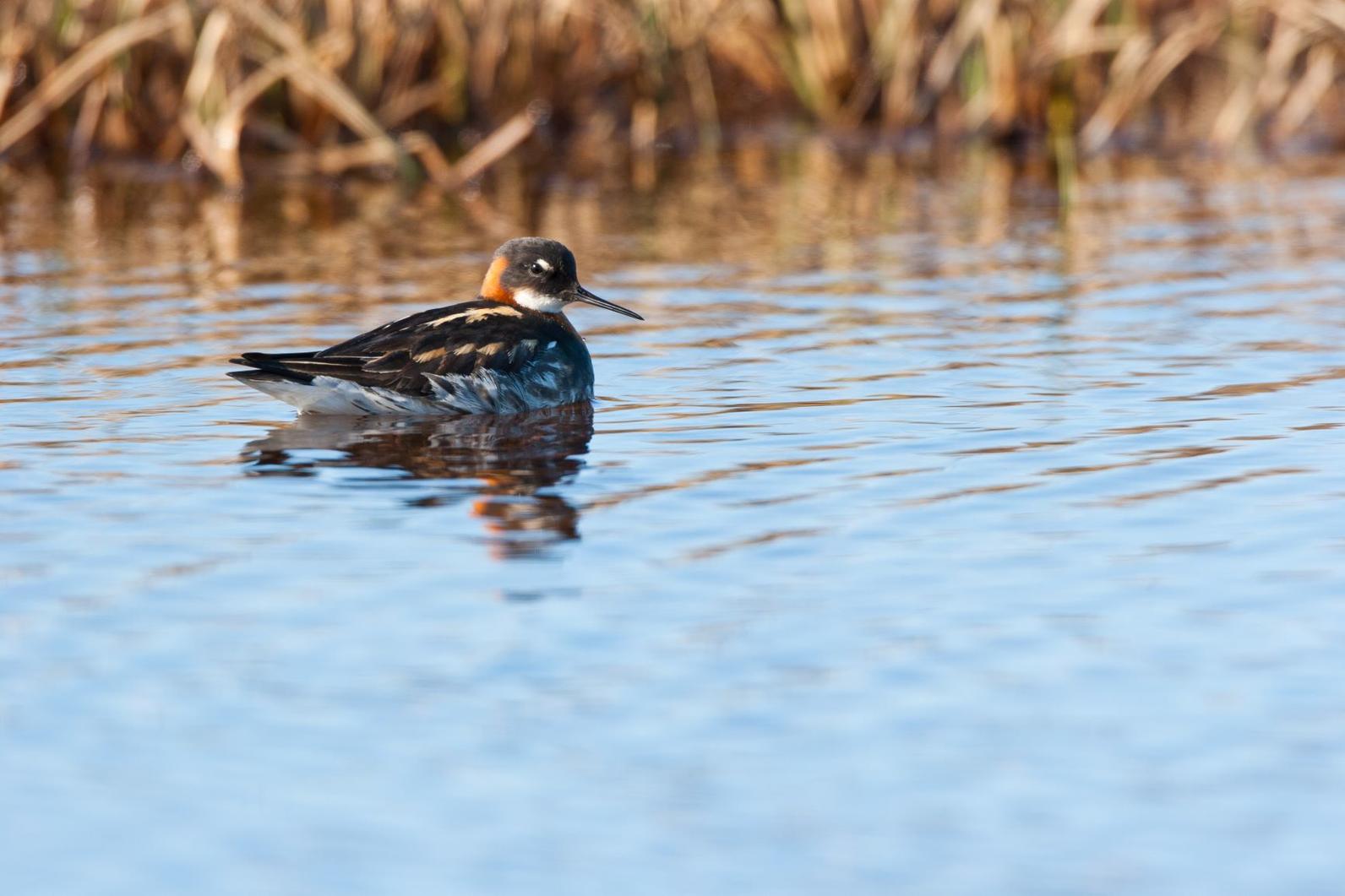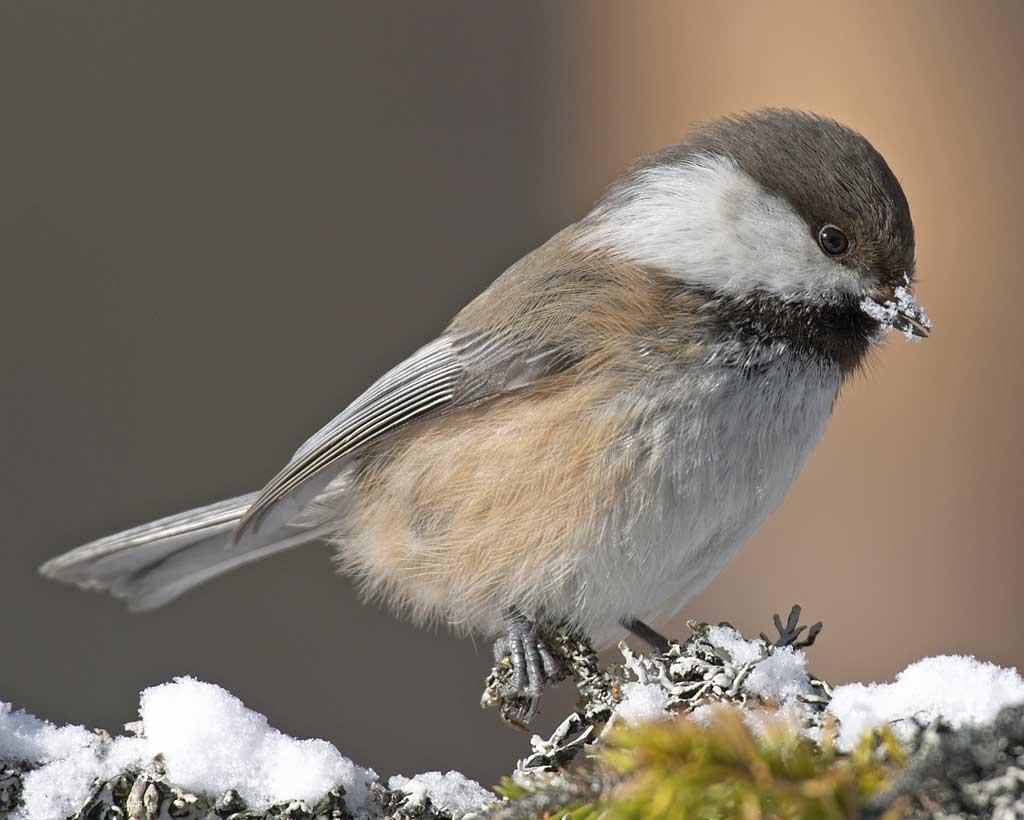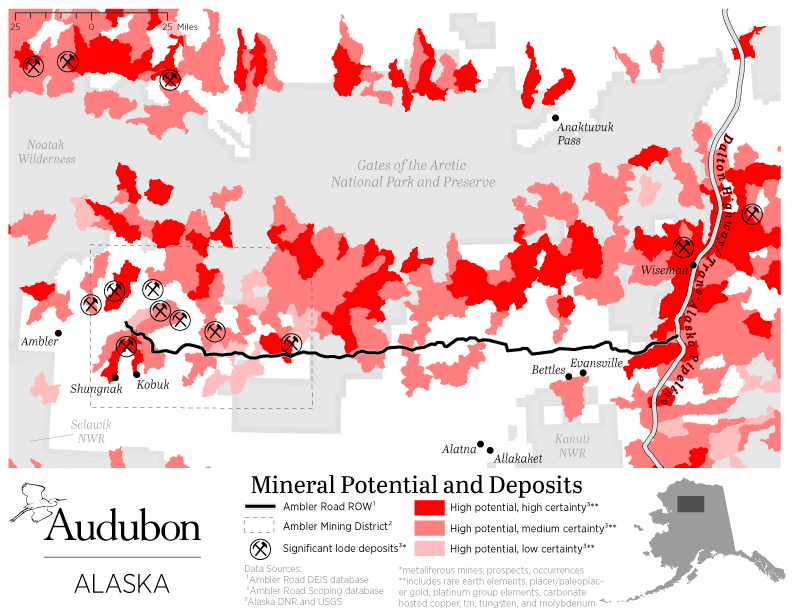The southern edge of the Brooks Range is home to Alaska’s boreal forest, an area teeming with life. It is also the chosen location for the largest proposed road through the Alaska wilderness—the Ambler Road. The projected road corridor is a patchwork of wetlands, boreal forests, and national parks, which act as important migration passageways—and nurseries—for birds and mammals. And the area boasts some of Alaska’s highest concentrations of wildlife. In the spruce and willow along the rivers are an array of birds such as Rusty Blackbirds, shorebirds, and Gray-headed Chickadees.

The mysterious Rusty Blackbird of Ambler
Several rivers, including the Wild and Scenic Kobuk and Noatak Rivers, transect the road corridor, running west to the Chukchi Sea of the Arctic Ocean. These wild rivers create the wetland nurseries and foraging areas for boreal songbirds and waterfowl. These wetlands are a special stronghold for the uncommon and enigmatic Rusty Blackbird. Researchers are beginning to understand several factors contributing to an alarming decline in their populations, including climate change, competition with other species, contaminants, and decreasing winter habitat. As wetlands disappear in the lower 48, wetlands in this region of Alaska become ever more important for birds like the Rusty Blackbird. In the face of climate change, Alaska’s wetlands are also the future climate strongholds for many of North America’s songbirds.

The quirky shorebirds of Ambler
Shorebirds, including Surfbirds and Wandering Tattlers, also rely on the wetlands habitat within the Ambler region. One shorebird in this area, the Red-necked Phalarope, is a shorebird by virtue of its genetics, but it actually acts more like a seabird during the winter, spending up to nine months (or nearly year-round for nonbreeding adults) far at sea. All phalaropes feed by whirling in circles on the water’s surface, which creates an upwelling of tiny creatures for the birds to pluck and eat. Phalaropes are also strange birds in that the females are brighter than the males, females fight over males, and the males provide all the nest-sitting and chick-rearing care. During nesting season, Red-necked Phalaropes can be found among the wetlands in the Ambler region of Alaska, where the males raise their chicks on clumps of moss or grasses, near freshwater ponds and bogs.

The elusive Gray-headed Chickadee of Ambler
The rivers and wetlands in the Ambler region wind their way through the surrounding landscape of boreal forests. Spruce, birch, and willow of the Boreal forest create the perfect habitat for Gray-headed Chickadees, the rarest chickadee in North America. They are something of a “grail bird” for birding visitors to Alaska. Like all chickadees, Gray-headed Chickadees nest in tree cavities, or holes, that are either natural or excavated by woodpeckers. There is a known population of these chickadees in the eastern Arctic, within the Arctic National Wildlife Refuge. Records from the past indicate that the Ambler region also hosted Gray-headed Chickadees, but recent reports are mixed. One thing is certain; retaining this type of intact, roadless, boreal wetlands habitat in Alaska’s Arctic Interior is important for conserving this rare little chickadee, and the spectacular diversity of Boreal birds.


Donate to Audubon
Help secure the future for birds at risk from climate change, habitat loss and other threats. Your support will power our science, education, advocacy and on-the-ground conservation efforts.



